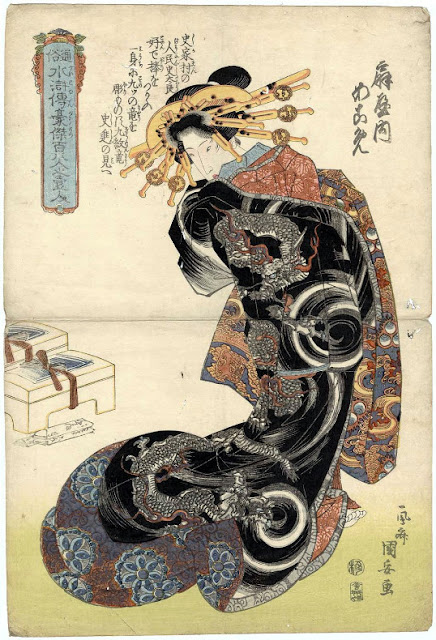 |
| Kuniyoshi: Doll Parodies (Ningyô mitate), 1856 |
This is a mitate-e from 1856 by Utagawa Kuniyoshi (1797-1861). It is named Doll Parodies (Ningyô mitate), and depicts Shintoism, Confucianism and Buddhism (Shinjubutsu).
We see Hinzuru and Uzume dancing in the foreground, while Confucius and Mencius (sitting) play Go behind them.
Uzume (left) is a Shinto goddess of joy and happiness, Hinzuru (right) is a Buddhist saint. Confucius is the founder of Confucianism, and Mencius is the most famous Confucian philosopher after Confucius himself.
The print depicts “dolls” in the Kannon Temple in Asakusa, yet these were not dolls in a conventional sense. They were life-size statues, clothed and realistic.
1855-1856, Kuniyoshi made a whole series of prints of the dolls displayed in the Kannon Temple, Tôsei mitate ningyô no uchi (當盛見立人形之内), of which “Doll Parodies” is one.

